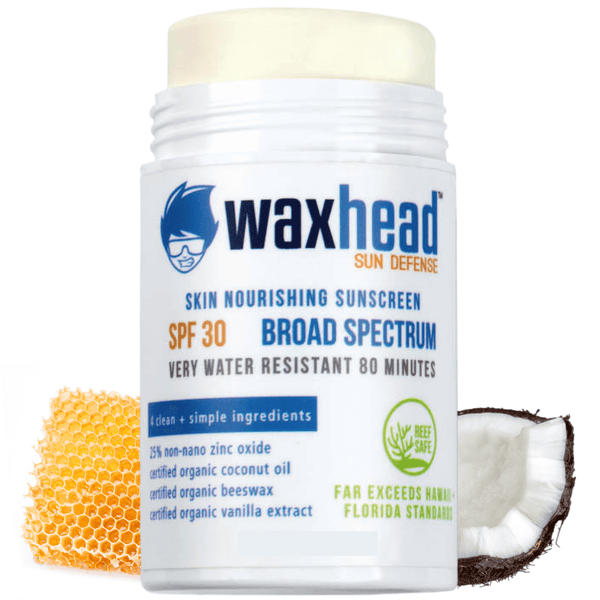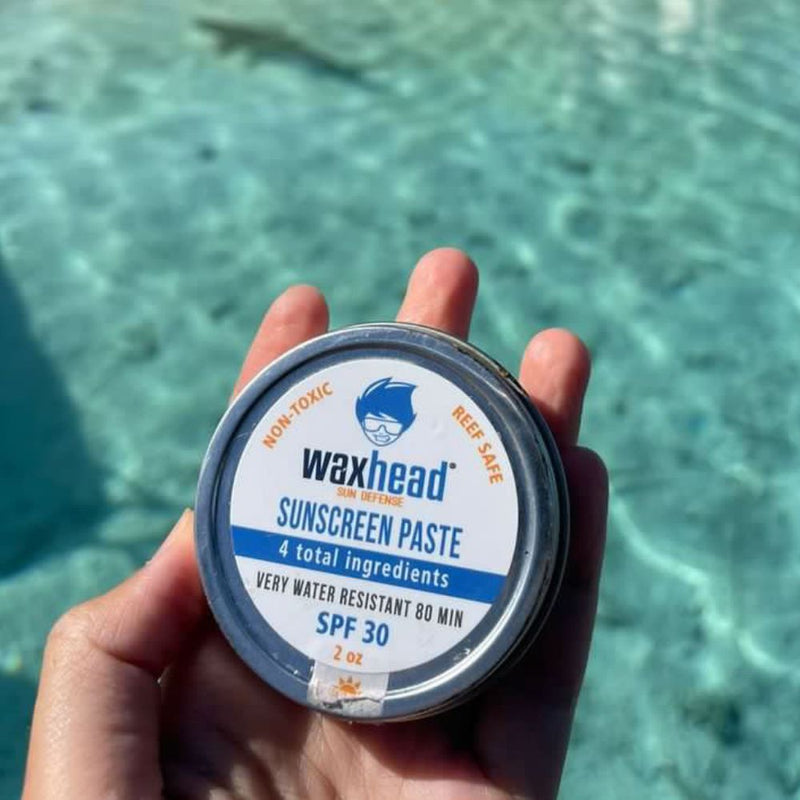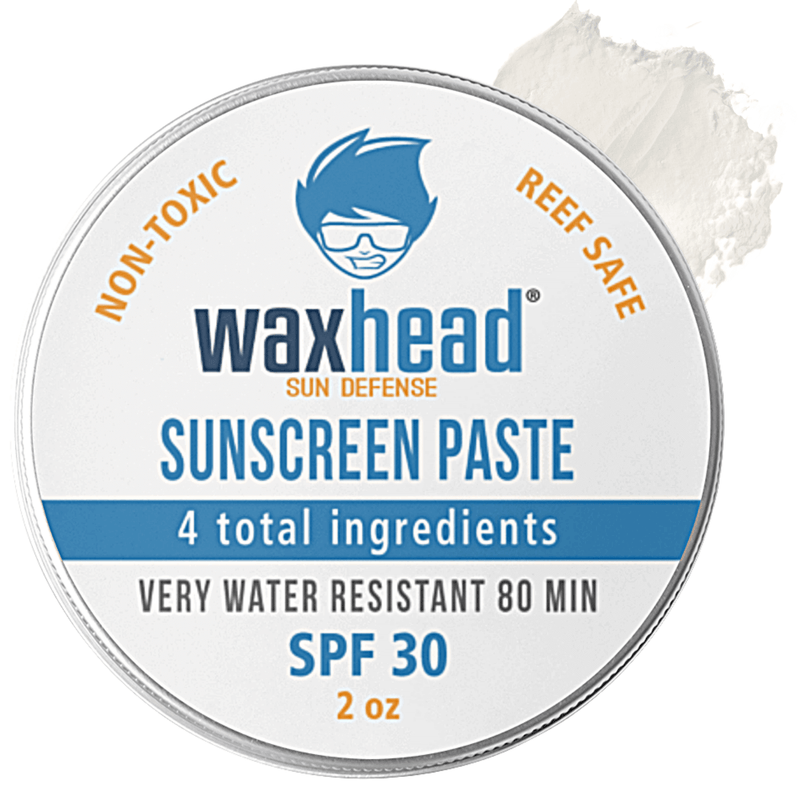A History of the Environmental Working Group (EWG)
The Environmental Working Group (EWG) has long been a beacon of transparency and consumer advocacy in the complex world of personal care products. Founded in 1993 by Ken Cook and Richard Wiles, the EWG is a non-profit organization dedicated to protecting human health and the environment. They aim to give people the information they need to make safer and healthier choices.
Over the years, EWG has become synonymous with cutting-edge research, particularly in chemical safety, environmental health, and consumer products. The EWG's Skin Deep® database has garnered widespread recognition among its various initiatives, especially for its detailed evaluations of cosmetics and skincare products.
One of the most influential aspects of EWG's work is its annual Sunscreen Guide. This guide has become a crucial resource for health-conscious consumers looking to protect themselves from the harmful effects of the sun while avoiding potentially dangerous ingredients. The EWG Sunscreen Guide provides ratings for hundreds of sunscreens based on their safety and effectiveness, helping consumers make informed choices that align with their health and environmental values.
The Birth of the EWG Sunscreen Guide
The EWG Sunscreen Guide was launched in 2007 in response to growing concerns about the ingredients used in many conventional sunscreens. At the time, most consumers were unaware that some ingredients in their sunscreens could pose health risks or harm the environment.
EWG sought to bridge this knowledge gap by creating a comprehensive resource that evaluated sunscreens based on their safety and efficacy. Over the years, the guide has evolved, incorporating the latest scientific research and expanding its database to include more products. Today, the EWG Sunscreen Guide is the gold standard for consumers seeking safe and effective sun protection.
How EWG Rates Sunscreens
The EWG sunscreen rating system is a sophisticated and multi-faceted process involving evaluating each product based on several key criteria. These criteria are designed to assess both the safety of the ingredients used and the overall effectiveness of the sunscreen in protecting against UV radiation. The ratings are presented on a scale from 1 to 10, with lower scores indicating safer and more effective products. A score of 1 or 2 is considered "low hazard," 3 to 6 is "moderate hazard," and 7 to 10 is "high hazard." This rating system allows consumers to quickly and easily identify sunscreens that meet their safety and effectiveness standards.
Ingredient Safety: The Core of EWG's Rating System
At the heart of the EWG sunscreen rating system is a thorough evaluation of the safety of the ingredients used in each product. EWG meticulously reviews the scientific literature on each ingredient to determine its potential health risks. This includes assessing whether the ingredient is a known allergen, irritant, or carcinogen. EWG also considers whether the ingredient can disrupt hormones or contribute to other long-term health issues. Ingredients that pose significant risks are flagged, and products containing them receive higher (worse) hazard scores.
For instance, chemical filters like oxybenzone and octinoxate are rated poorly due to their potential to cause hormone disruption and allergic reactions. In contrast, mineral filters like non-nano zinc oxide and titanium dioxide are rated more favorably, providing broad-spectrum protection without penetrating the skin or posing significant health risks.
UV Protection: Evaluating Sunscreen Efficacy
In addition to assessing ingredient safety, the EWG sunscreen rating system also evaluates the efficacy of each product in protecting against UV radiation. This is crucial because even the safest ingredients are of little value if the sunscreen does not adequately protects against the harmful effects of the sun. Accordingly, EWG examines the sunscreen's ability to block UVA and UVB rays, the two types of ultraviolet radiation that can damage the skin.
UVA rays penetrate the skin more deeply and are primarily responsible for premature aging and long-term skin damage, while UVB rays are the leading cause of sunburn. Both types of rays can contribute to the development of skin cancer, making broad-spectrum protection essential. EWG favors sunscreens that provide strong protection against UVA and UVB rays, as indicated by a high SPF (Sun Protection Factor) and the inclusion of ingredients known for their broad-spectrum capabilities.
The Role of SPF in EWG Sunscreen Ratings
The Sun Protection Factor (SPF) measures how well a sunscreen protects against UVB rays, i.e. how well it protects against sunburn. While the SPF value is an important indicator of sunscreen effectiveness, the EWG does not solely rely on SPF when rating sunscreens. This is because SPF only measures protection against UVB rays and does not account for UVA protection. Furthermore, high SPF values can sometimes give consumers a false sense of security, leading them to spend more time in the sun without reapplying sunscreen as frequently as they should.
EWG considers the SPF value and the combined UVA and UVB protection balance when rating sunscreens. Products with a strong SPF (between 30 and 50) that also provide strong UVA protection are generally rated more favorably than those with excessively high SPF values that may not offer adequate UVA protection. EWG also warns against sunscreens with SPF values above 50, as these can be misleading and contain higher concentrations of harmful chemicals.
Additional Factors in EWG Sunscreen Ratings
Beyond ingredient safety and UV protection, the EWG sunscreen rating system also considers other factors that can impact a product's safety and effectiveness. One such factor is the potential for sunscreen to degrade in sunlight, reducing its effectiveness and increasing the risk of skin damage. EWG favors stable sunscreens that maintain their protective properties when exposed to sunlight.
Another consideration is the presence of fragrance and other additives that can cause hormone or allergic reactions or skin irritation. EWG generally rates sunscreens with added fragrances or other unnecessary chemicals more harshly, as these ingredients can increase the risk of skin sensitivities. Additionally, EWG looks at the product's water resistance, as water-resistant sunscreens are more effective in real-world conditions where consumers may sweat or swim.
The Importance of Non-Nano Mineral Sunscreens
One key recommendation from the EWG is to opt for non-nano mineral sunscreens, particularly those containing non-nano zinc oxide or titanium dioxide. These ingredients provide broad-spectrum protection by sitting on top of the skin and physically blocking UV radiation rather than being absorbed into the skin like chemical filters. Non-nano mineral sunscreens are less likely to cause skin irritation and do not pose the same risks of hormone disruption or allergic reactions as some chemical filters.
The term "non-nano" refers to the size of the mineral particles used in the sunscreen. Non-nano particles are larger than nano-sized particles, making them less likely to penetrate the skin and enter the bloodstream. This is a crucial distinction because some studies have raised concerns about the potential health risks of nano-sized particles, particularly their ability to cross the skin barrier and accumulate in the body. Consumers can minimize these risks by choosing non-nano mineral sunscreens while receiving effective sun protection.
The Controversy Over Oxybenzone and Other Chemical Filters
One of the most contentious issues in sunscreens is using chemical filters like oxybenzone, octinoxate, and avobenzone. These ingredients are common in many conventional sunscreens because they effectively absorb UV radiation. However, they have also been linked to significant health and environmental issues. Oxybenzone, in particular, has been shown to disrupt hormones and is a common allergen. It has also been implicated in the bleaching of coral reefs, leading to bans on its use in certain parts of the world.
Due to their potential risks, EWG consistently rates sunscreens containing these chemical filters poorly—instead, the organization advocates using mineral-based sunscreens that provide broad-spectrum protection without the same concern. By avoiding sunscreens with chemical filters, consumers can protect their health and reduce their environmental impact.
The Environmental Impact of Sunscreen Ingredients
In recent years, there has been growing awareness of the environmental impact of sunscreen ingredients, particularly in marine environments. Chemical filters like oxybenzone and octinoxate have been shown to cause coral bleaching and harm aquatic life, leading to bans in places like Hawaii and eco-conscious tourist destinations. These ingredients wash off in the water when people swim or shower, contributing to the pollution of oceans and waterways.
EWG has led the charge to raise awareness about sunscreens' environmental impact and advocate for safer, more eco-friendly alternatives. Mineral sunscreens, particularly those containing non-nano zinc oxide, are considered safer for marine environments because they do not have the same harmful effects on coral reefs and other aquatic life. Consumers can help protect the environment while safeguarding their skin by choosing EWG-recommended sunscreens.
The Importance of Reading Ingredients Labels
One key message that EWG emphasizes in its sunscreen guide is the importance of reading ingredient labels on all skincare products, including sunscreens. Many consumers assume a product must be safe if it is on the market. However, this is rarely the case. Some ingredients allowed in sunscreens are linked to health concerns, but they continue to be used because they effectively block UV radiation.
By reading ingredient labels and understanding what each ingredient does, consumers can make more informed product choices. EWG provides detailed information about the safety and efficacy of common sunscreen ingredients, making it easier for consumers to identify which products are safe and effective. This level of transparency is crucial in helping consumers navigate the often-confusing world of skincare products.
Why EWG Sunscreen Recommendations Matter
EWG sunscreen recommendations are more than just a list of safe products—they are a vital resource for health-conscious individuals looking to protect themselves and their families from the sun's harmful effects. The organization's rigorous evaluation ensures its recommended products are effective and free from harmful ingredients that could pose long-term health risks.
For outdoor enthusiasts and health-conscious consumers, EWG's Sunscreen Guide provides peace of mind, knowing that the sunscreens they choose have been thoroughly vetted for safety and efficacy. By following EWG's recommendations, consumers can make better purchasing decisions that align with their values and priorities, whether avoiding certain chemicals, supporting eco-friendly products, or choosing sunscreens offering broad-spectrum protection.
EWG Sunscreen Ratings and Consumer Trust
EWG sunscreen ratings carry so much weight because consumers trust the organization. EWG has built a reputation for being a reliable and transparent source of information on product safety, and its sunscreen guide is a testament to this. Unlike many other rating systems, EWG does not accept funding from the companies whose products it reviews, ensuring its ratings are unbiased and based solely on scientific evidence.
This level of transparency and independence is rare in consumer products, where industry influence can skew consumer information. EWG's commitment to providing accurate and reliable information has made it a trusted resource for millions, particularly those prioritizing health and environmental safety in purchasing decisions.
The Future of EWG Sunscreen Ratings
As the science of sunscreen ingredients continues to evolve, so will the EWG sunscreen rating system. EWG is committed to staying at the forefront of sunscreen safety and efficacy research, and they continually update their database to reflect the latest scientific findings. This commitment to ongoing research and transparency ensures consumers always have access to the most up-to-date and reliable information when choosing a sunscreen.
In the future, we expect EWG to expand its sunscreen guide further, incorporating new criteria or categories to help consumers make more informed choices. As more consumers become aware of the importance of ingredient safety and environmental impact, EWG's role as a trusted resource will only continue to grow.
How to Use EWG's Sunscreen Guide
The EWG sunscreen guide is invaluable for consumers looking to make the best choices for their skin and the environment. The guide is easy to use, with a searchable database that allows users to look up specific products or browse by category. Each sunscreen is rated based on its ingredient safety and UV protection, with detailed information on each product's potential risks and benefits.
To get the most out of the EWG Sunscreen Guide, consumers should take the time to read through the product reviews and understand the criteria used to rate each sunscreen. By doing so, they can make more informed decisions that align with their health and environmental values. Additionally, consumers can sign up for EWG's email alerts to stay informed about the latest updates to the guide and other important news related to sunscreen safety.
Addressing Common Concerns About EWG Sunscreen Ratings
While the EWG sunscreen guide is widely respected, it has also faced some criticism, particularly from the sunscreen industry and some dermatologists. One common concern is that EWG's ratings may cause consumers to avoid sunscreens altogether, potentially increasing their risk of sunburn and skin cancer.
However, EWG is clear in its messaging sun protection is crucial, and they encourage sunscreen as part of a comprehensive sun protection strategy that includes seeking shade, wearing protective clothing, and avoiding peak sun hours.
Another concern is EWG's strict criteria may lead to lower ratings for some sunscreens that are otherwise effective at preventing sunburn. EWG responds its ratings are not solely based on efficacy but safety, and it believes consumers deserve to know about any potential risks associated with their products. By providing transparent information, EWG empowers consumers to make informed choices that balance efficacy with safety.
EWG Sunscreen Recommendations: A Closer Look
For those new to the EWG Sunscreen Guide, starting with some of the organization's top-rated products can be helpful. EWG's highest-rated sunscreens typically contain non-nano zinc oxide or titanium dioxide as their active ingredients and are free from harmful chemical filters like oxybenzone. These sunscreens provide broad-spectrum protection without the risks associated with conventional sunscreens.
Some of the most popular brands that consistently receive high ratings from EWG include Badger, Thinksport, and Waxhead. These brands are known for their commitment to using safe and effective ingredients, and they offer a range of products that cater to different needs, from everyday sun protection to sports and outdoor activities.
Recommended Waxhead Sunscreens
For consumers seeking the safest and most effective sun protection, Waxhead Sunscreens are an excellent choice. All Waxhead products have received the #1 rating from EWG seven years in a row, a testament to our commitment to using only the safest and most effective ingredients.
Waxhead Sunscreens are made with non-nano zinc oxide, providing broad-spectrum protection without the risks associated with chemical filters. They are also free from synthetic fragrances, parabens, and other harmful additives, making them suitable for even the most sensitive skin.
Waxhead's range of sunscreens includes options for everyday use and formulations designed specifically for sports and outdoor activities. Our water-resistant products are eco-friendly and safe for marine environments, making them an excellent choice for health-conscious outdoor enthusiasts. By choosing Waxhead Sunscreens, consumers can enjoy peace of mind knowing they are protecting their skin with a product that meets the highest safety and efficacy standards.
Conclusion: The Importance of Informed Choices
In today's world, where consumers are increasingly aware of the potential risks associated with their products, the EWG Sunscreen Guide is more important than ever. By providing transparent and scientifically-backed information, EWG empowers consumers to make safer and healthier choices for themselves and their families. Whether you're spending a day at the beach, hiking in the mountains, or simply going about your daily routine, choosing an EWG-rated sunscreen can help protect your skin and the environment.
In summary, the EWG sunscreen rating system is a valuable tool for anyone making informed decisions about sun protection; by understanding how EWG rates sunscreens and what the ratings mean, consumers can choose products that offer the best combination of safety and efficacy.
For those seeking the highest level of protection, Waxhead sunscreens are a top choice, offering broad-spectrum protection without compromising on safety or environmental impact.





























